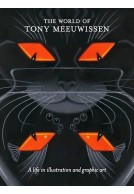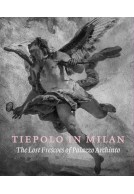Court & Craft (Paperback)
A masterpiece from northern Iraq
Pages: 176
Illustrations: 120 colour illustrations
ISBN: 9781907372650
Published: 15th February 2014
(click here for international delivery rates)
Need a currency converter? Check XE.com for live rates
A masterpiece of medieval Arab metalwork revealed, shedding light on courtly life in northern Iraq under the Mongol governorship. Accompanying a major scholarly exhibition at The Courtauld Gallery, this book explores one of the most beautiful and enigmatic objects in The Courtauld’s collection: the so-called ‘Courtauld wallet’, a brass container richly inlaid with gold and silver, imitating a lady’s textile or leather bag, and probably made in Mosul in northern Iraq around 1300. No other object of this kind is known. Decorated all round with courtly figuresand on the top with an elaborate banqueting scene featuring an enthroned couple, it has long been recognised as a masterpiece of Arab metalwork. Yet, despite the superb quality of its design and craftsmanship and its status as a unique object, this exceptional metalwork bag has never been properly published. Thus it remainslittle known outside a small circle of specialists, and little understood even within that circle. Encompassing a variety of multidisciplinary essays by distinguished historians and art historians – on subjects ranging from music at the Mongol court, Mosul under Mongol governorship and Mongol marriage customs to the role of womenunder the Ilkhanids –this publication aims to explore the origins, function and iconography of this splendid luxury object as well as the cultural context in which it was made and used. It will bring together other images of enthroned Mongols with female consorts, as well as scenes of hunters, revellers and musicians in a varietyof media, including illustrated manuscripts, ceramics, textile, and metalwork. By presenting the bag alongside carefully selected contemporary material, it will provide an insight into courtly life under the Mongols in the newly conquered areas of their empire, and will also provide an unrivalled opportunity to investigate the inlaid brass tradition in Mosul after the Mongol Conquest. Objects made before and after this seismic event will be reproduced side by side to demonstrate how the Mosul metalworkers adapted their work for their new patrons.














